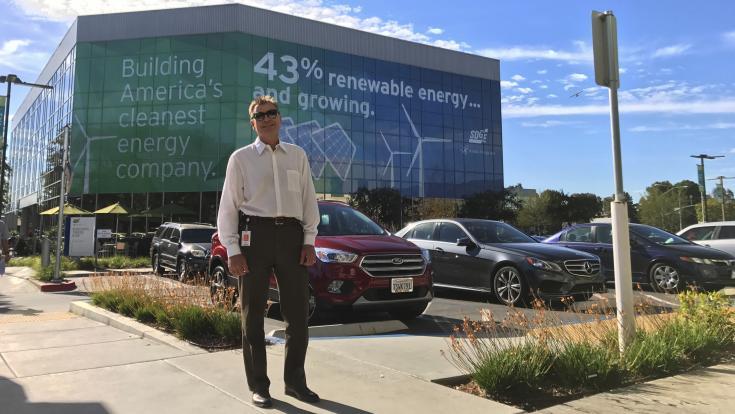As a kid growing up in Winnipeg, Canada, Tom Bialek loved taking things apart and putting them back together. He was good at math and science, and was drawn to electrical engineering after going on a tour of one of Manitoba hydro’s power plants.
The proverbial lightbulb went off in his head, he recalled, because he saw with his own eyes how electricity—something that is invisible—was made, transmitted and turned into something that comes out of a wall outlet.
Today, as chief engineer for SDG&E, Bialek is as passionate about electrical engineering as ever. In his role, he shapes strategies and policies around implementation of innovations to make our power grid run more efficiently and more reliably.
Making Things Better, Faster
“To me, engineering is always about moving things forward. How do you improve what currently exists today? How can you make it better, faster, and more optimal?” Bialek asked.
After completing a bachelor and master of science degree in electrical engineering from the University of Manitoba in the 1980s, he went on to earn a PhD from Mississippi State University in 2005.
Driven by the pursuit of excellence, Bialek has garnered two patents to his name for inventions that enhance grid reliability for SDG&E customers. In addition, he has authored or co-authored more than 30 academic papers over his three-decade career at electrical equipment manufacturers and energy companies.
Smoothing the Integration of Renewable Energy
Much of Bialek’s recent work is focused on solving the challenge of integrating renewable energy and battery storage onto the grid, while maintaining. stability and reliability. Since the sun isn’t always shining and the wind isn’t always blowing, solar and wind power varies throughout the day, which may cause the voltage and frequency to fluctuate on the grid.
That’s where Bialek comes in with a solution.
He gathered data on a large solar system showing how its intermittent solar production impacts the grid. He used the data to convince the California Public Utilities Commission to create standards for smart inverters, which help smooth the grid integration of renewable energy. California’s standards are subsequently being adopted nationwide by the Institute of Electrical and Electronics Engineers.
Smart inverters are inverters on steroids that convert the sun’s energy from direct current to alternating current used on the grid. They have advanced capabilities that make solar systems more grid friendly, so the inherent variability of renewable energy can be more easily accommodated.
As we integrate more renewable energy into our system with the help of smart inverters, we create a more sustainable energy future.
Pioneering Microgrids
Bialek also is leading the charge to advance microgrid technology. Microgrids can operate independent of the main grid, enabling isolated communities or critical facilities to be powered during emergencies. Bialek is the lead principal investigator for the Borrego Springs Microgrid. Funded by the California Energy Commission and the U.S. Department of Energy, this pilot project has received international recognition.
If there is a technical conference about microgrids and smart grid technologies taking place somewhere in America, chances are Bialek will have been asked to participate—more often than not as a speaker—sharing his considerable expertise.


